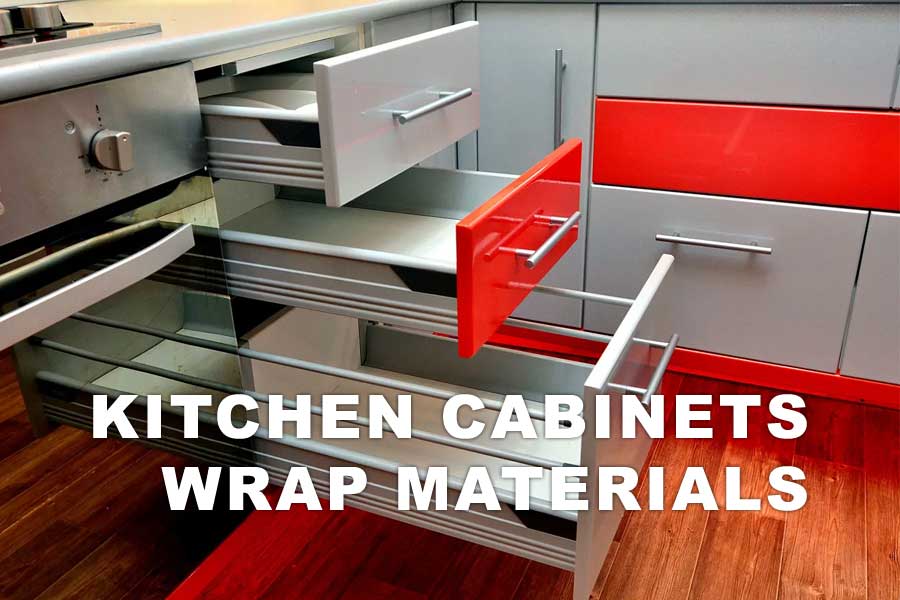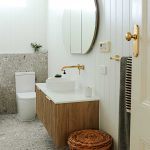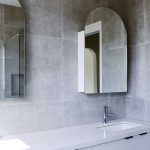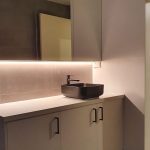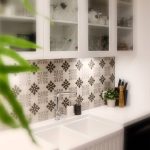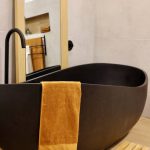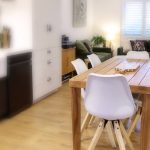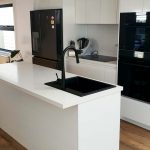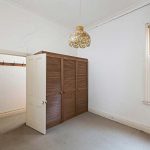Chipboard kitchen furniture is affordable, and it’s not just used for the fronts, but even the wall panels and window sills.
Chipboard kitchens are considered a low-cost option because the material is obtained from recycled material. Wood chips are much cheaper than solid wood, and once pressed with various resins, they are not much inferior to solid boards. The most popular material for furniture cabinets and fronts is particleboard, which is laminated to give it a beautiful appearance.
There are three main kitchen cabinet wraps on the Australian market.
- Two Pack
- Laminate
- Vinyl
Two Pack kitchen wraps
A Two Pack kitchen wraps is a paint finish consisting of two parts, a paint solution and a hardener, providing the same quality as a car paint. There are several different finishes available: glossy, semi-glossy, satin, matt and Crystal-Coat textured finishes. Two Pack offers you a huge choice of any custom colour, as well as the ability to match any colour you desire. Two Pack cabinets are usually more expensive than vinyl and laminate. Two Pack gives you the freedom to choose any colour or finish you want; this is another plus if you want to give your new design a special look. The coating is very easy to clean. Because of its special wear and tear properties this material is guaranteed to last the longest time in your kitchen.
Laminate kitchen wraps
It’s hard to argue with the advantages of laminated chipboard for kitchen furniture:
The main advantages are:
- Low cost
- Neat appearance
- Good machinability with power tools
- A variety of colours, textures and patterns
Unlike conventional chipboard products, laminate not only looks better, it is also safer. A dense, opaque wrap on their surface keeps harmful composite vapours away. It also protects the structure of the material from swelling up under the influence of moisture, to which kitchen furniture is subjected on a daily basis. The melamine foil, which fulfils these functions, may be 0.2-0.4 mm thick, although thicker versions (up to 2 mm) can also be used. In any case, it hardly ever fades in the sun, so that kitchen cabinets, even if they have been standing at the window sill for several years, will retain their original colour.
Vinyl kitchen wraps
Vinyl kitchen wraps is also used to make the kitchen renovation cabinets. They can be pressed to a fairly high density, which has a positive effect on the strength of the furniture itself. But for kitchen doors and drawer fronts, a panel thickness of 16 mm is considered optimal. This is an ideal size for mounting fixtures and decorative accessories with sufficient resistance of the board to mechanical stress.
Vinyl technology has a significant impact on the durability of kitchen fronts. The weakest point of vinyl-covered products is the edges. Once you damage the coating on them, the life of such kitchen furniture will only last a year or two.
For this reason, there are various ways of treating and protecting the edges of pressed panels:
- Acrylic edging is the shortest-lived option for kitchens. However, it can be regularly refinished by hand. Strips are easy to find and can be glued on with a regular iron.
- Post forming is a relatively new technology that involves wrapping the kitchen fronts with a continuous sheet of plastic, without seams or joints. This solves the main problem of pressed boards in the kitchen: moisture permeability from the edges.
- The aluminium profile underneath these vinyl overlays can be sealed with the thinnest, most unreliable wrap. A metal frame will ensure that it is fully retained and that the garnish has an original appearance and a long service life.
The big surprise is the cost of vinyl as the price is comparable to laminate. But the quality is very much lower.
The trick is the production technology, which allows for the wonders of coating and customers are bribed by the look and miss out on the quality.
Conclusion
I hope you enjoyed our overview of kitchen cabinet finishes.
Remember to always check the quality of the materials to be used and consult a professional because your kitchen should last for at least 20 years.

